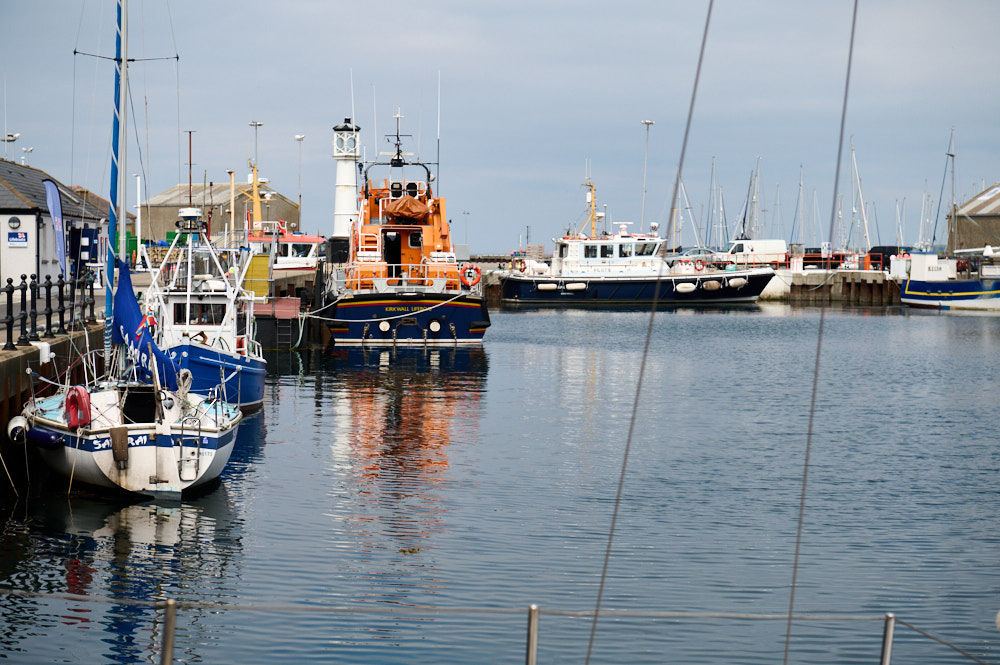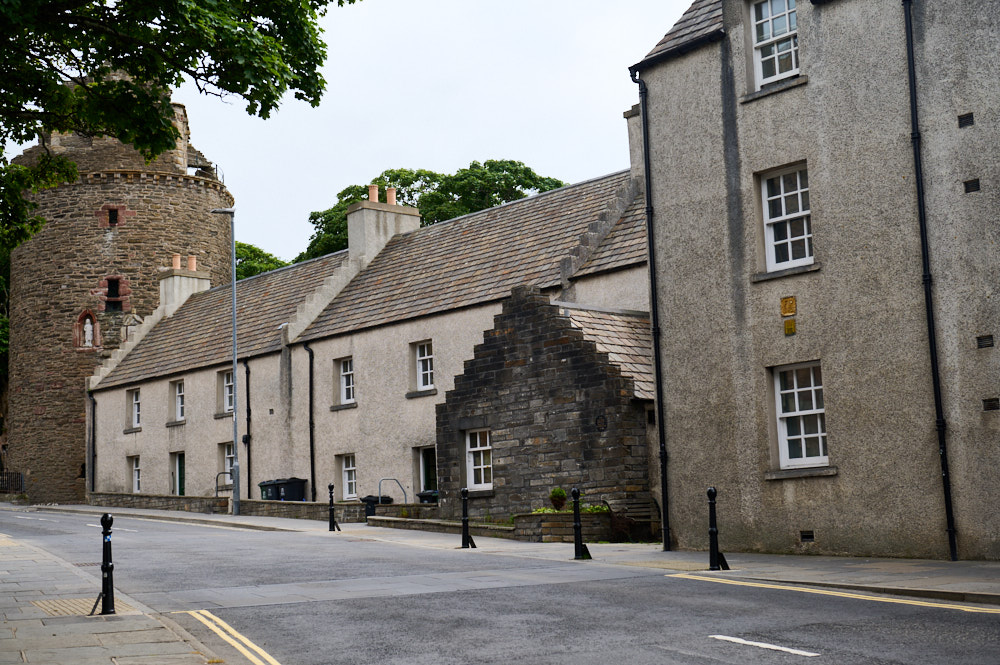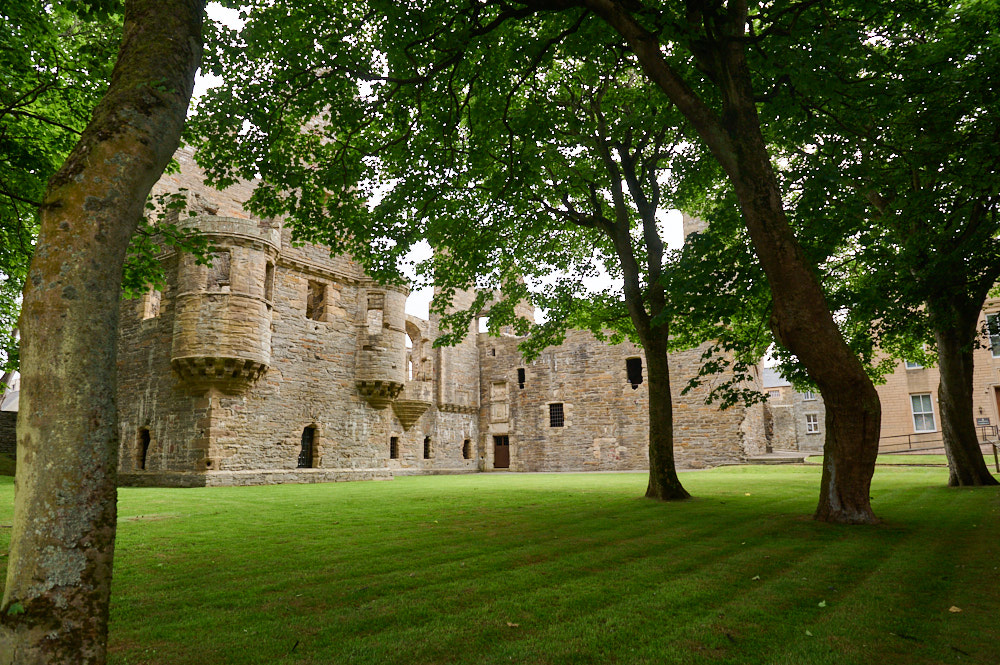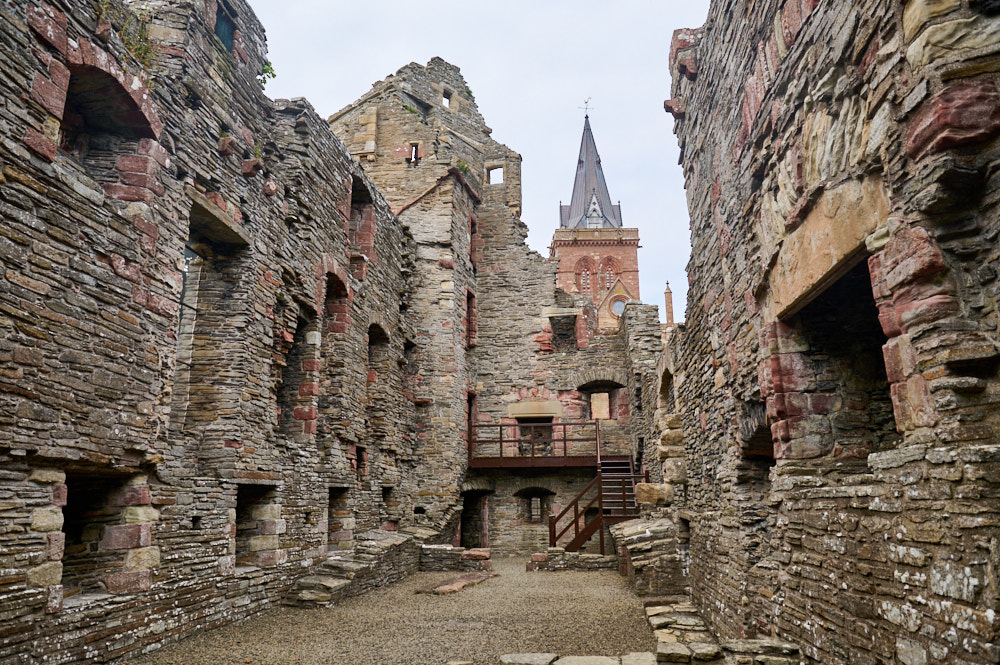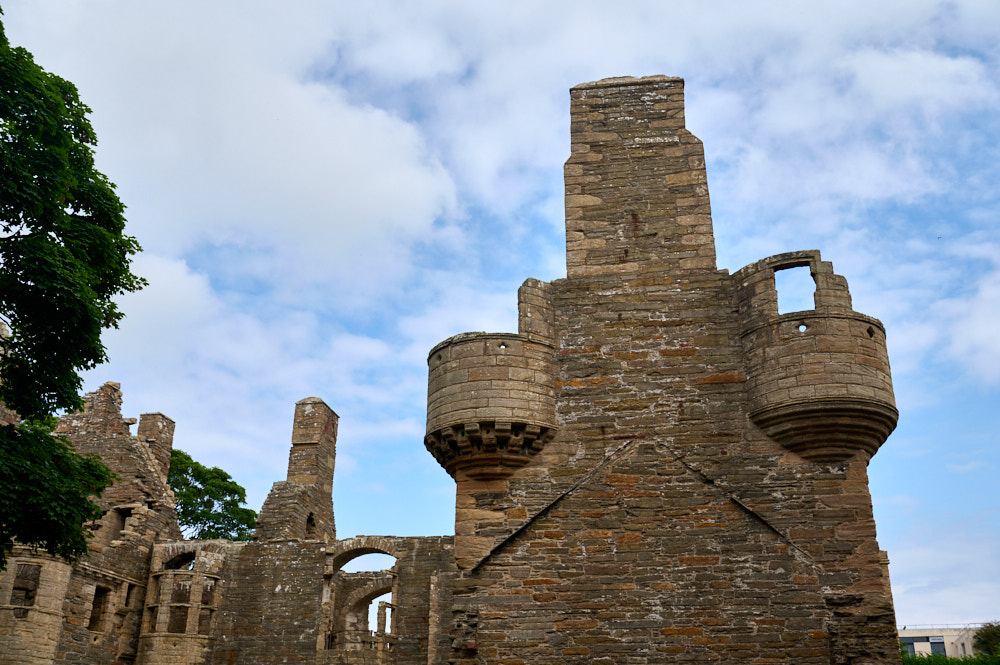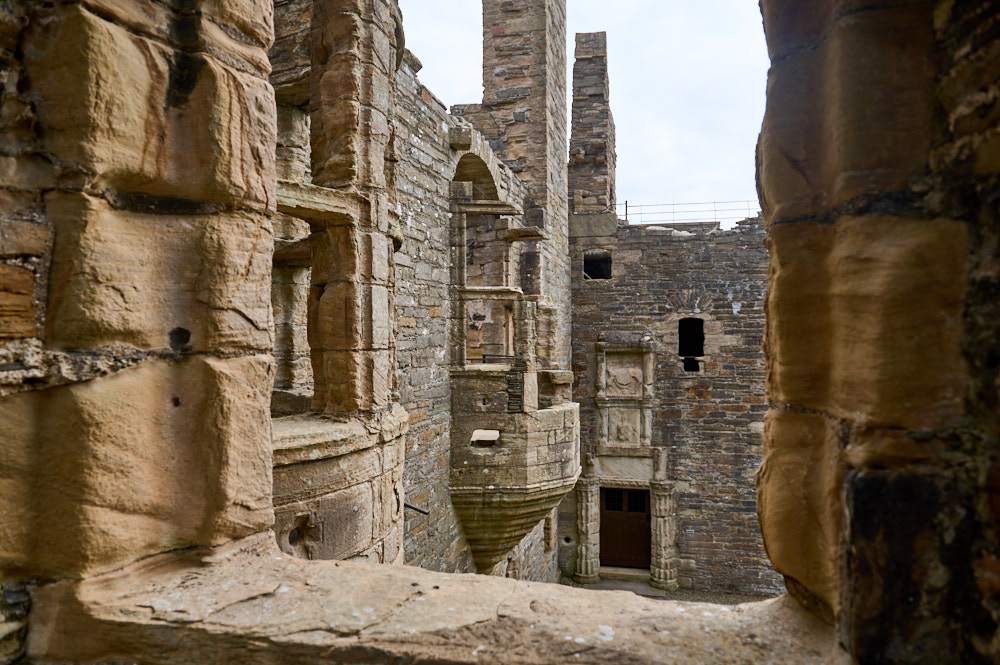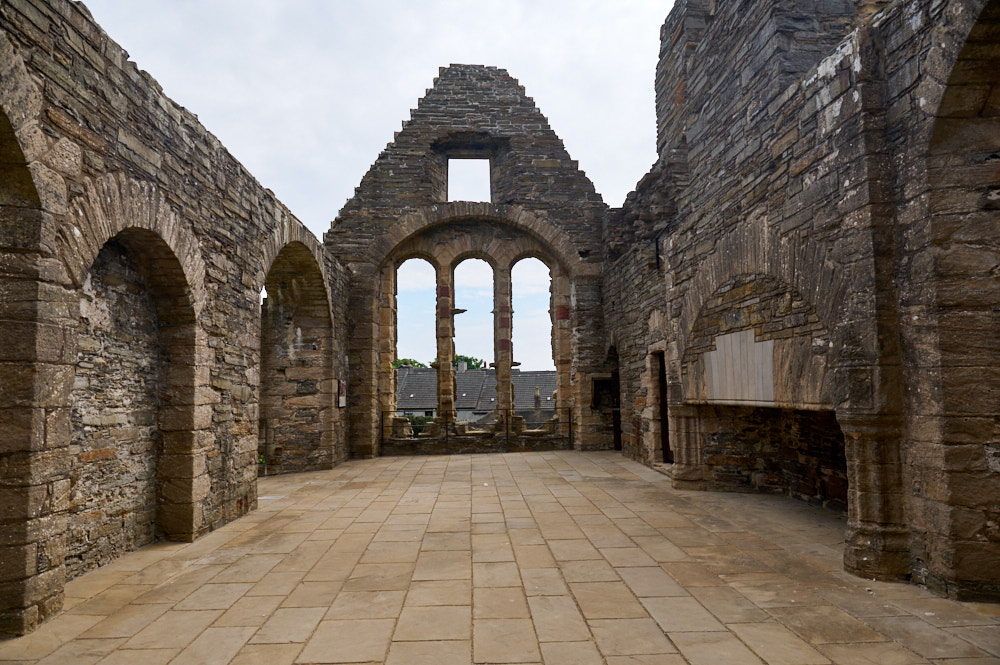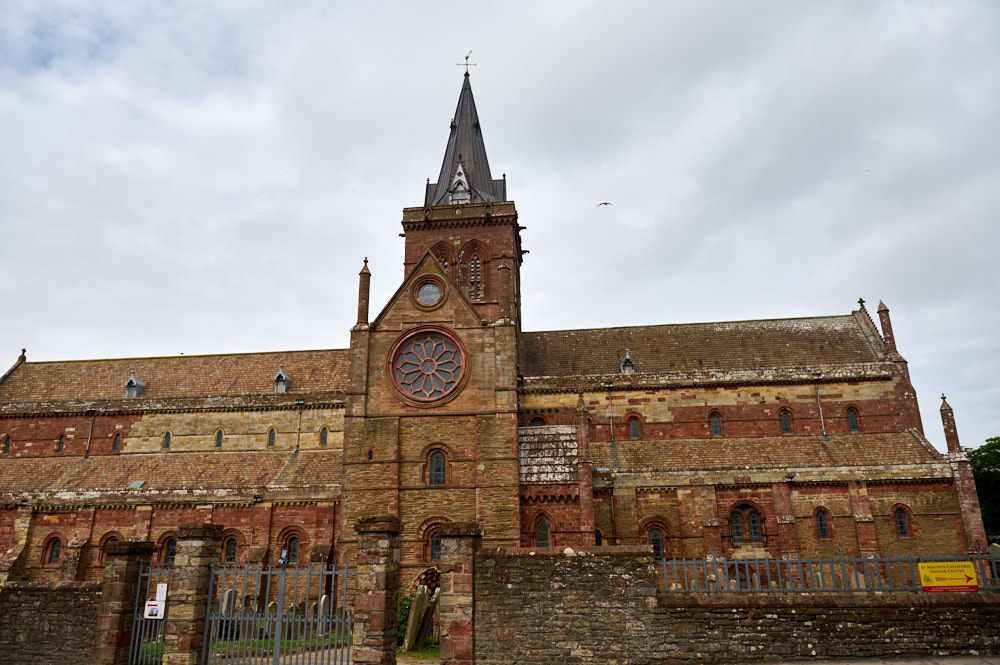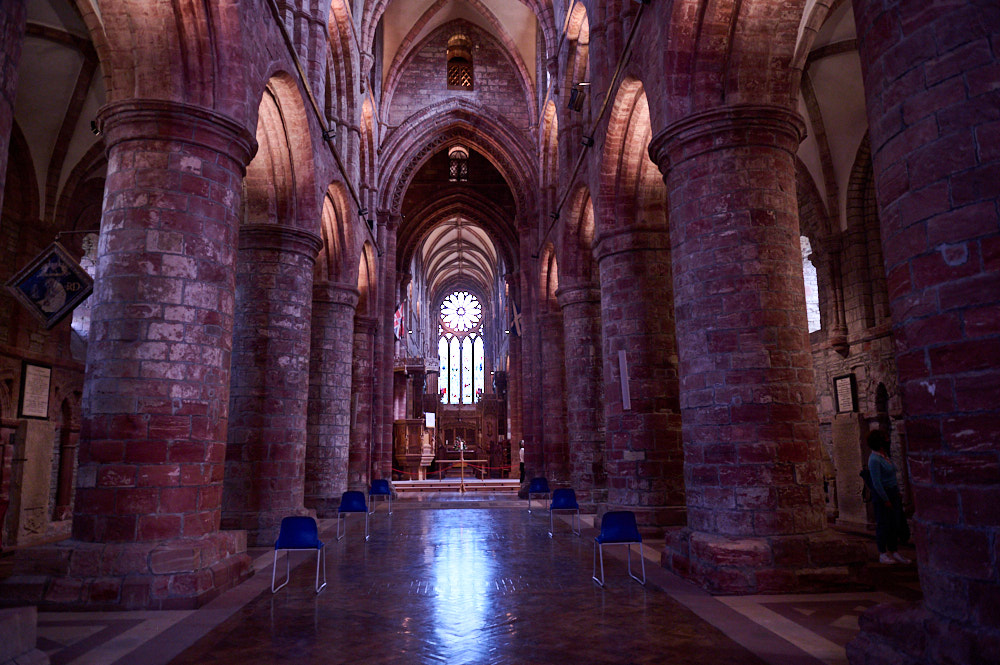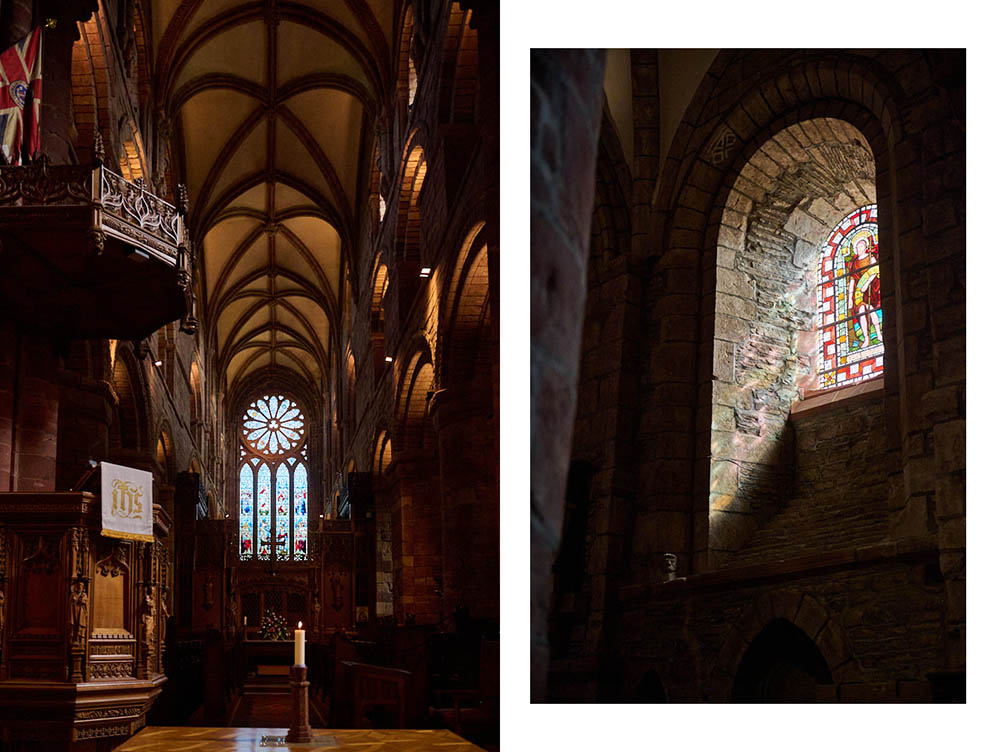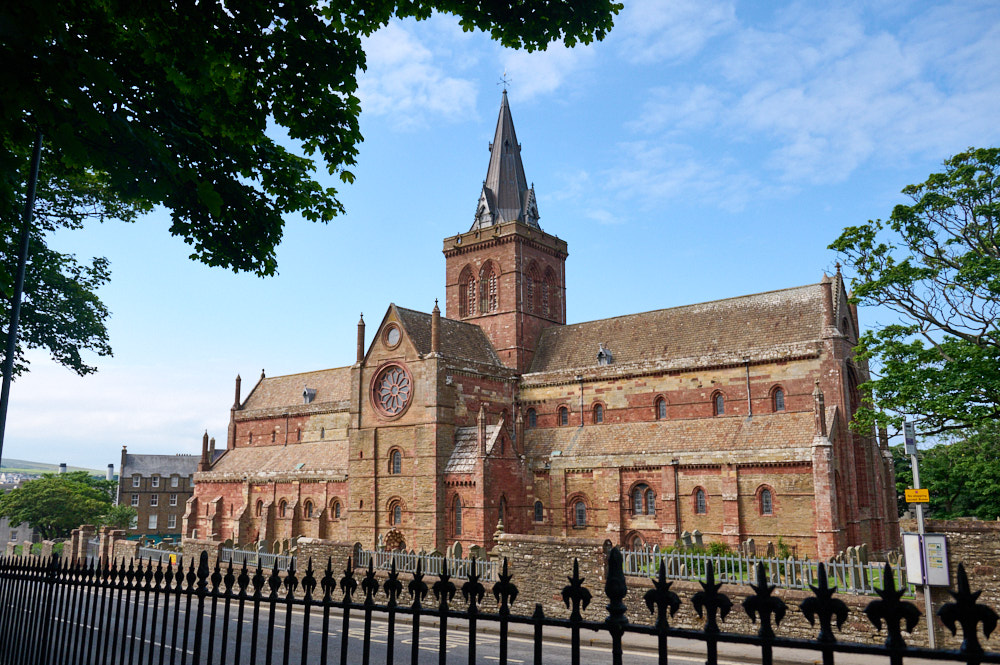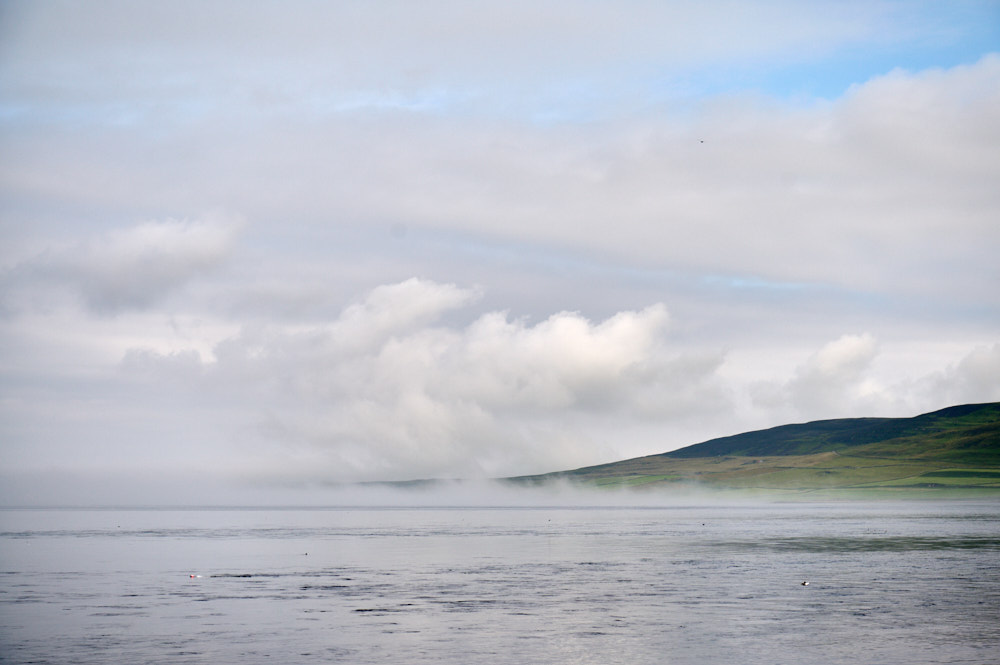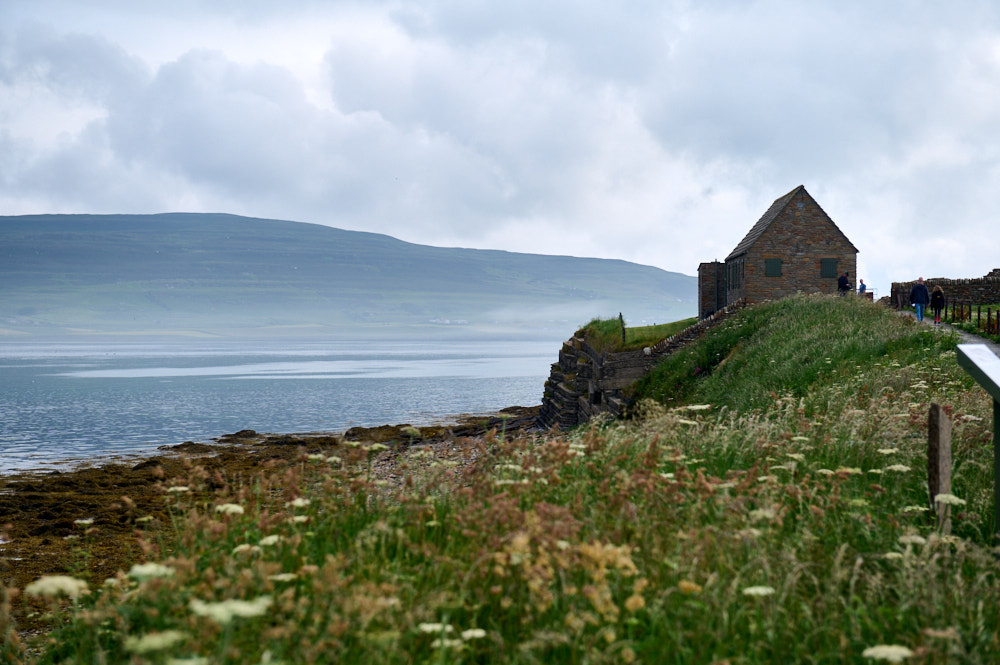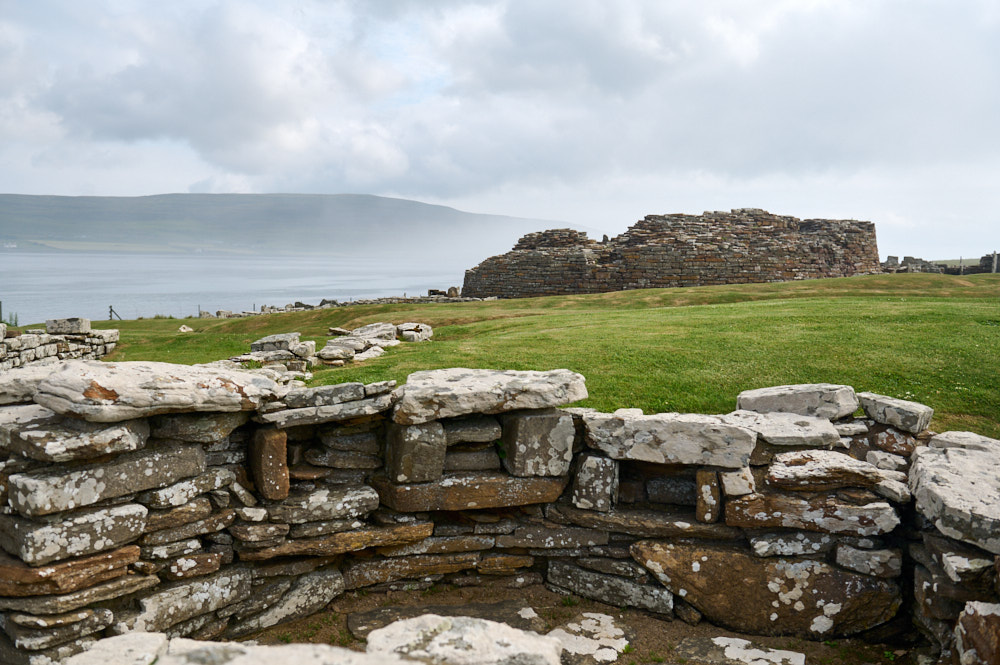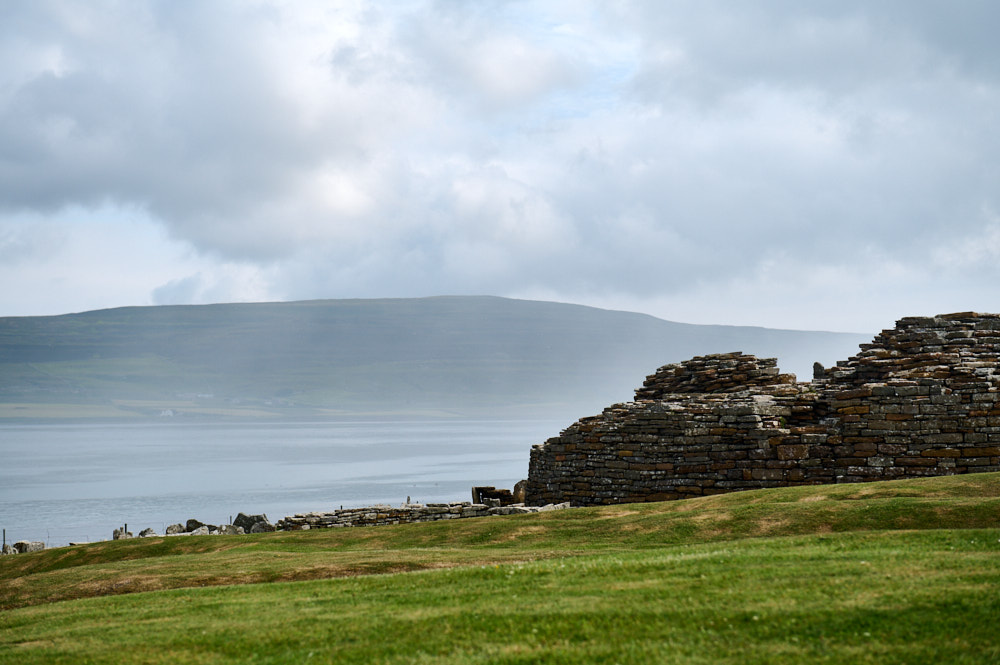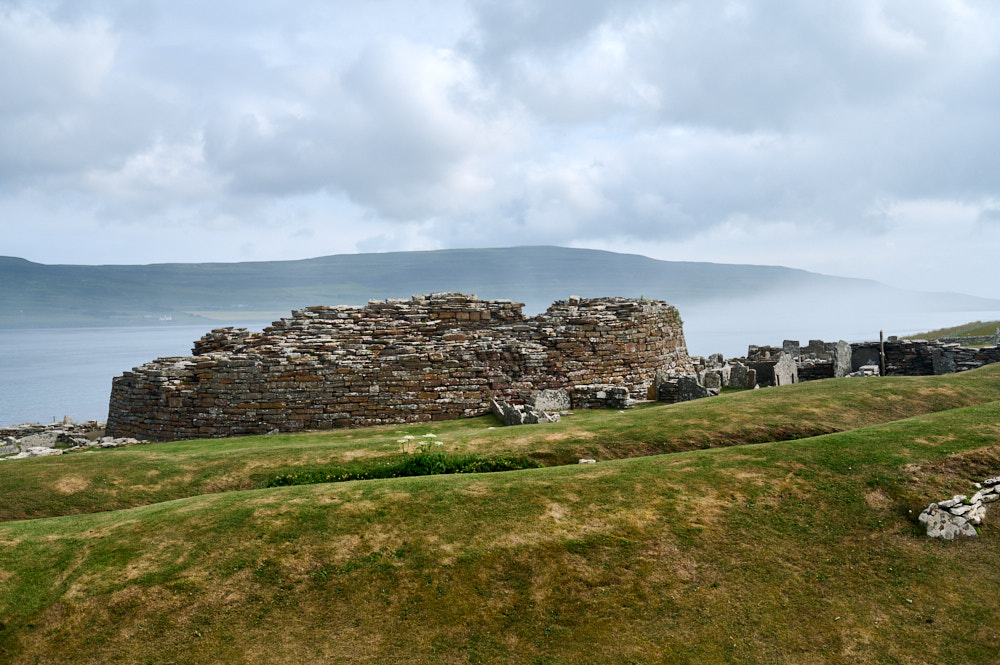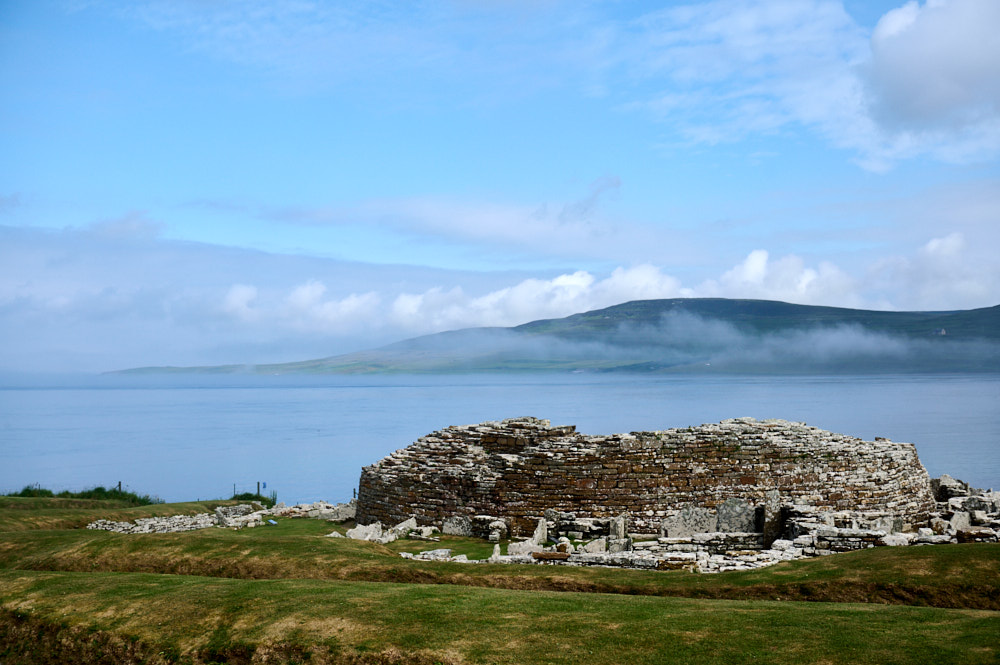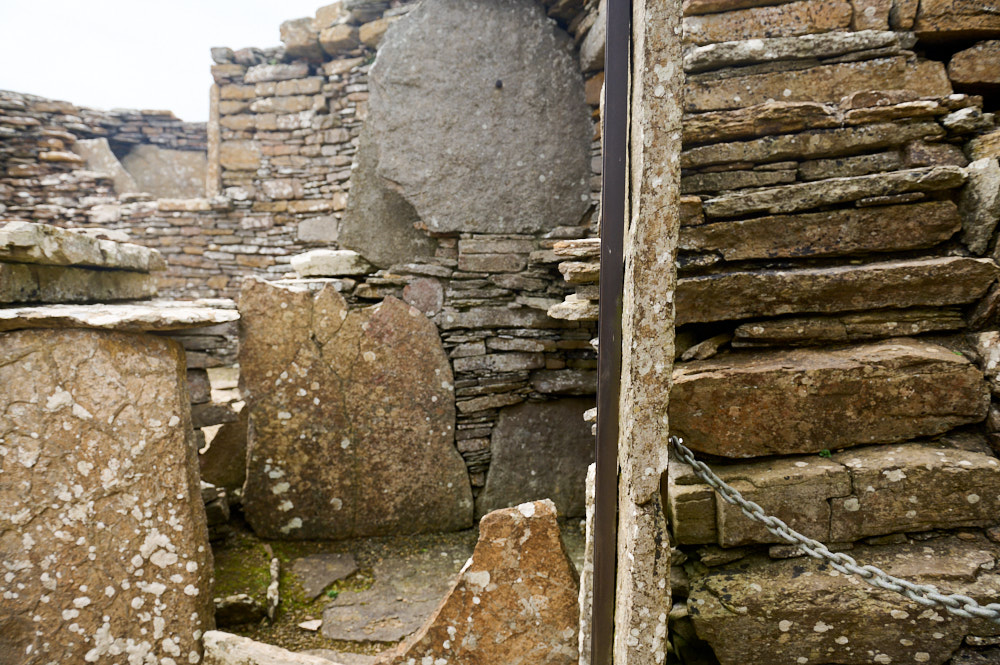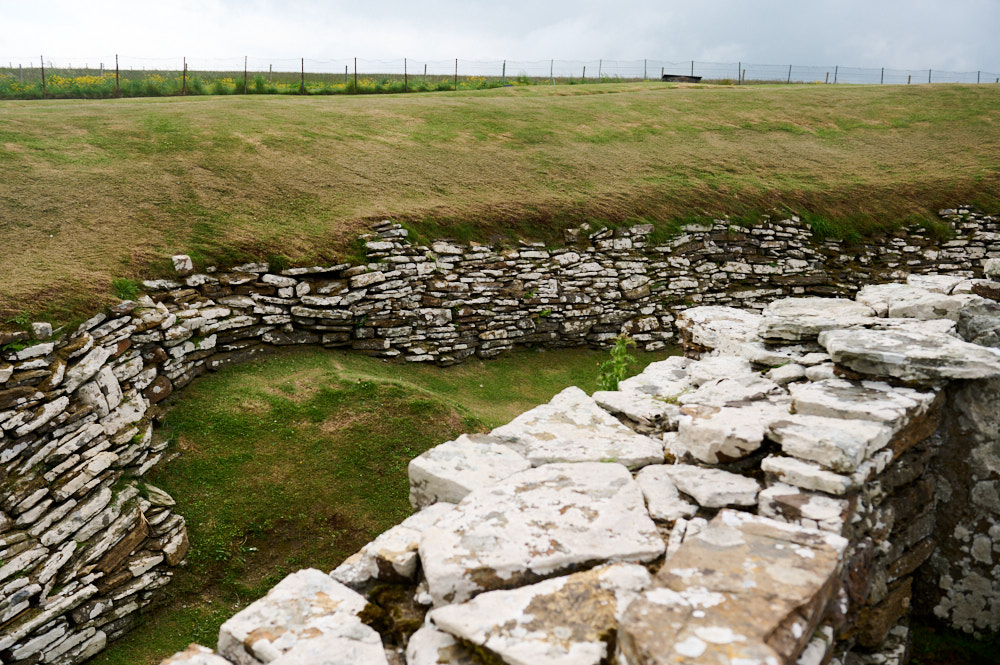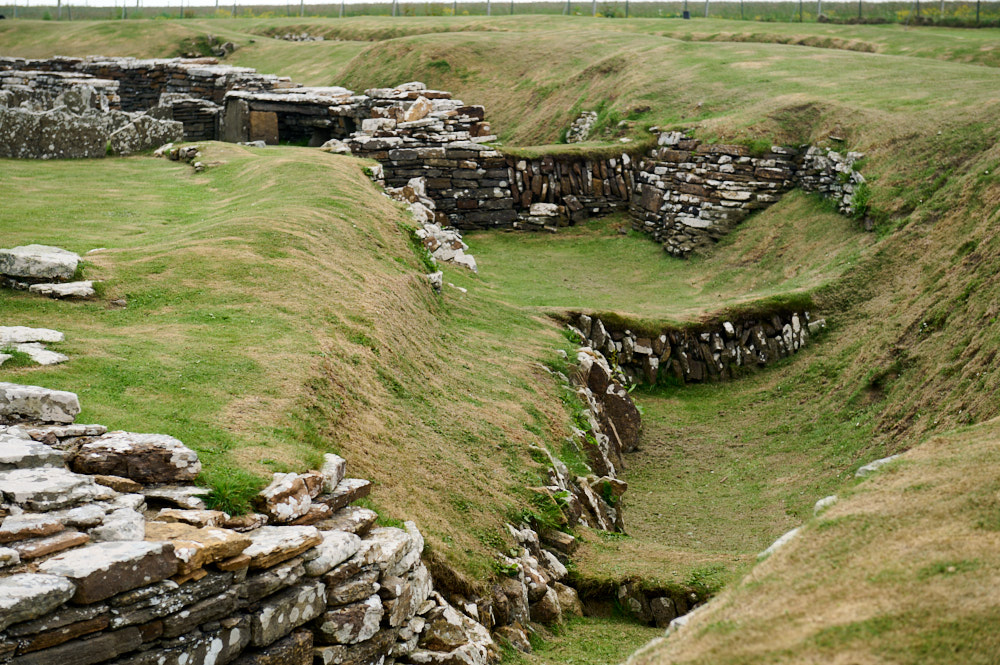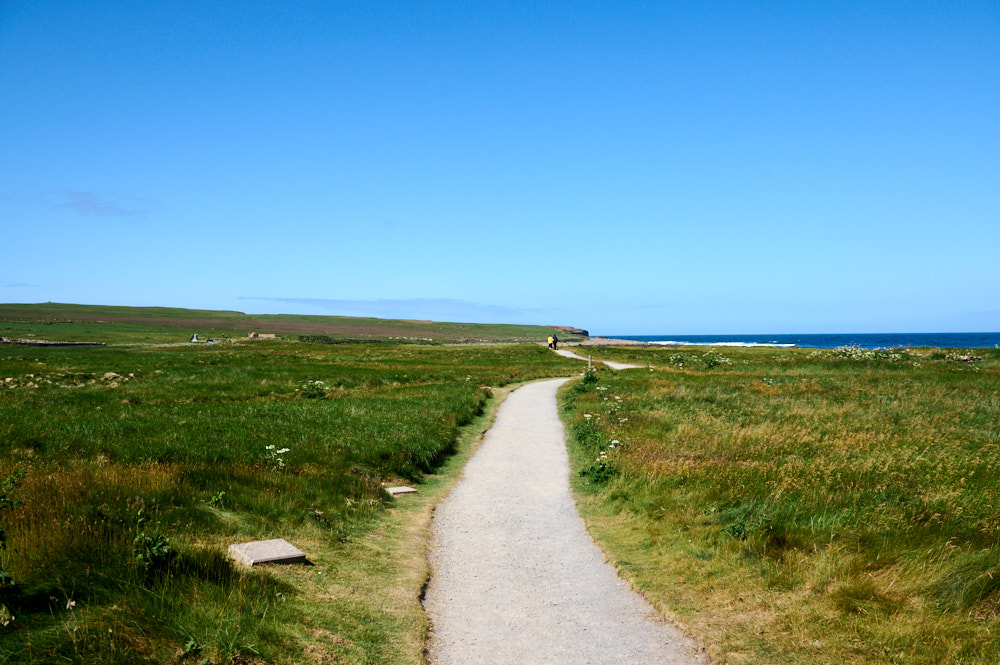
In 1850 a storm uncovered something truly special lying under the sand dunes next to Skaill beach in Orkney: Skara Brae – a Neolithic settlement.
The Neolithic village of Skara Brae was discovered in the winter of 1850. Wild storms ripped the grass from a high dune known as Skara Brae, beside the Bay of Skaill, and exposed an immense midden (refuse heap) and the ruins of ancient stone buildings. The discovery proved to be the best-preserved Neolithic village in northern Europe. And so it remains today. (Visit Scotland)
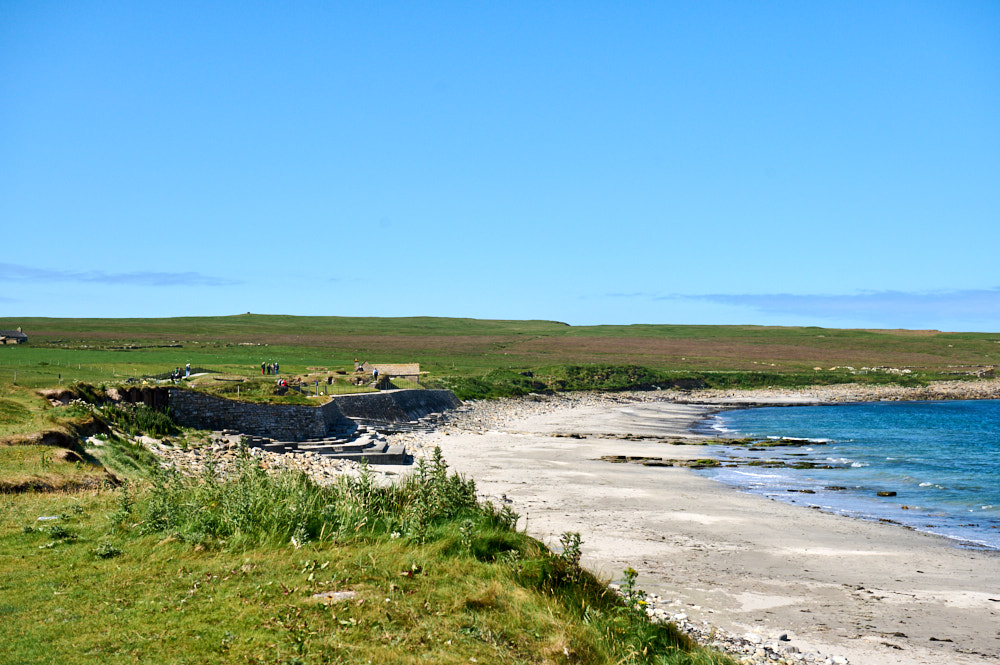
This revealed the outline of a number of stone buildings – something that intrigued the local laird, William Watt, of Skaill, who embarked on an excavation of the site.
In 1868, after the remains of four ancient houses had been unearthed, work at Skerrabra was abandoned. The settlement remained undisturbed until 1925, when another storm damaged some of the previously excavated structures. (Orkney Jar)
Skara Brae was inhabited around 5000 years ago – even before the pyramids or Stonehenge were built and thanks to being buried under the sand for around 4000 years it is very well preserved and gives us a glimpse of life back in the Neolithic age.
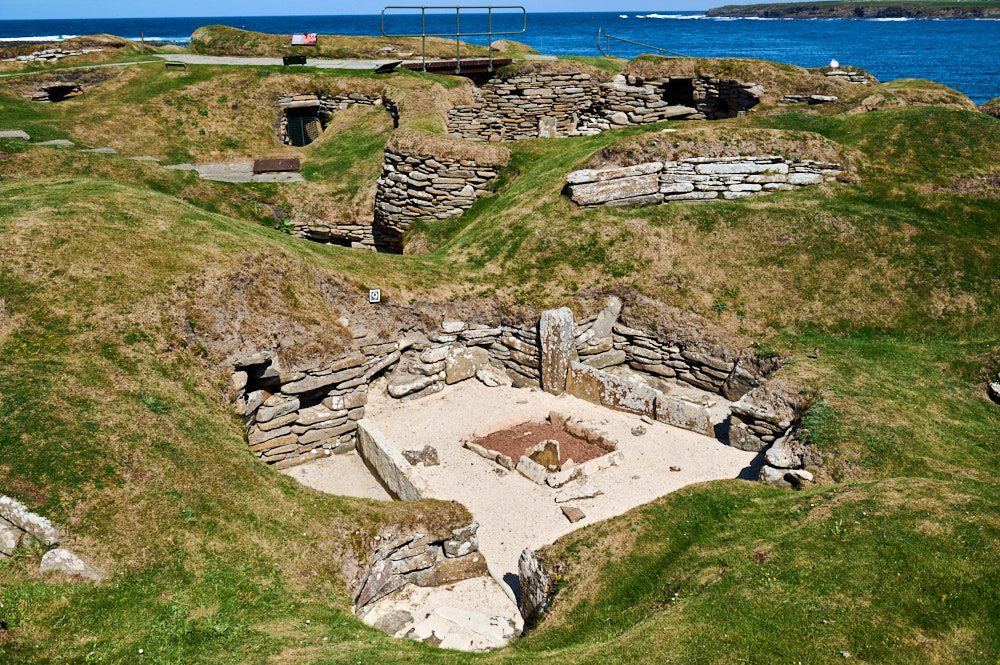
Original an inland settlement next to a freshwater loch Skara Brae consists of 10 stone structures. All of them are well built with flat stones (slap stones), set in the middle of a mould and all of them are connected by covered passageways.
Each house has one room, around 40 square meters, with fitted stone furniture, like shelves, dressers, beds, fireplace and tanks in the floor.

There is one bigger structure without beds which might have been a workshop or meeting place.
The villagers were farmers, hunters and fishermen who were able to produce beautiful and complex items using basic tools. (Historic Enviroment Scotland)
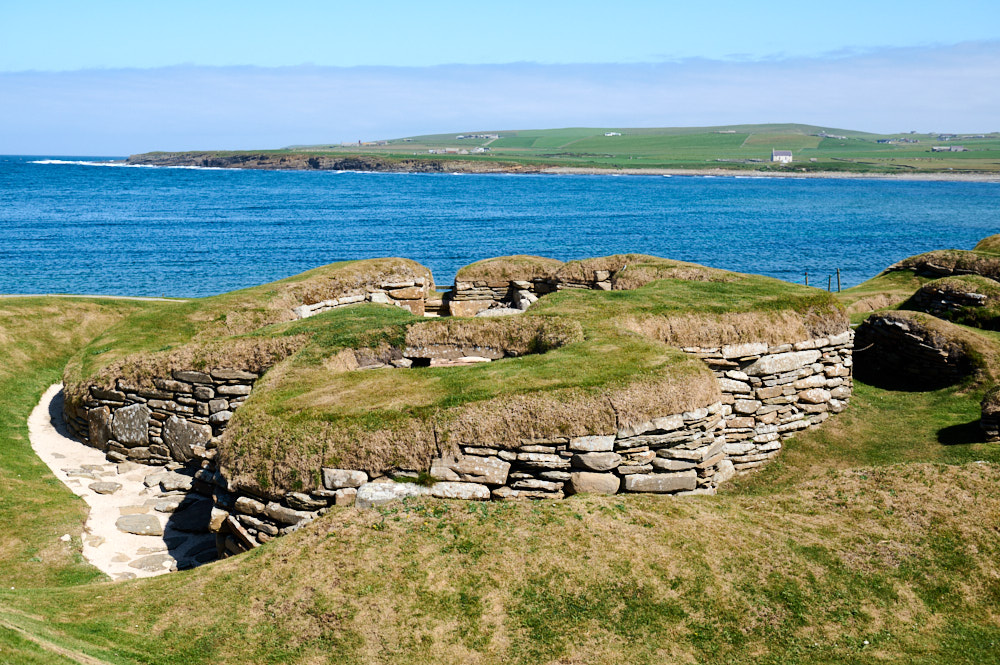

Each house was constructed along the same design and many have the same sort of furniture and the same layout of the rooms. The village had a drainage system and even indoor toilets. (Worldhistory)
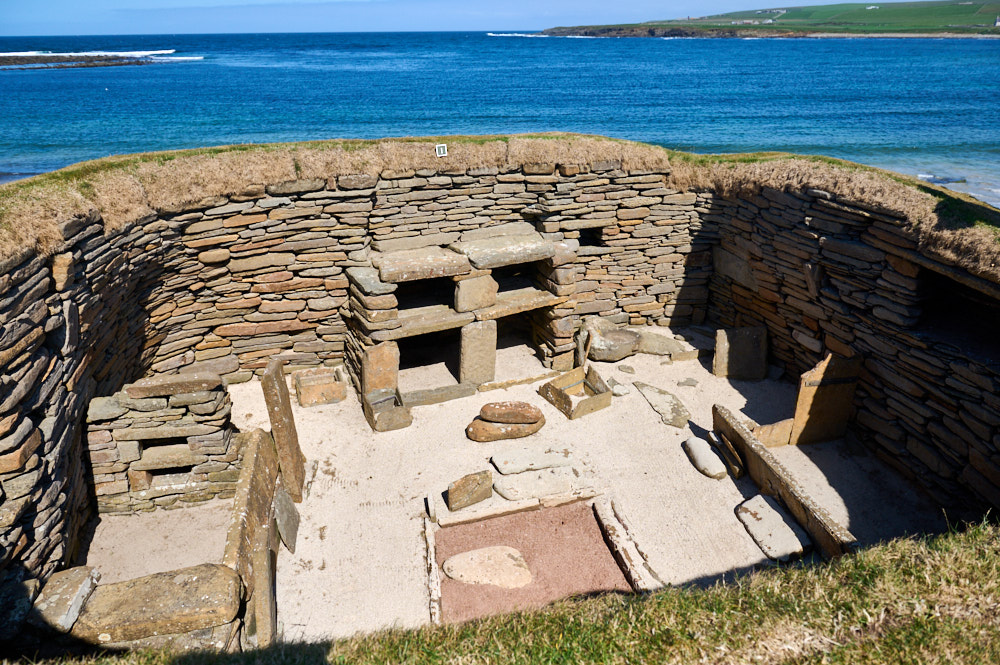
Skara Brae has probably abandoned around 2500 BC when the weather became colder and wetter. There were also theories that there was a storm which made the inhabitants leave quickly, but others disagree.

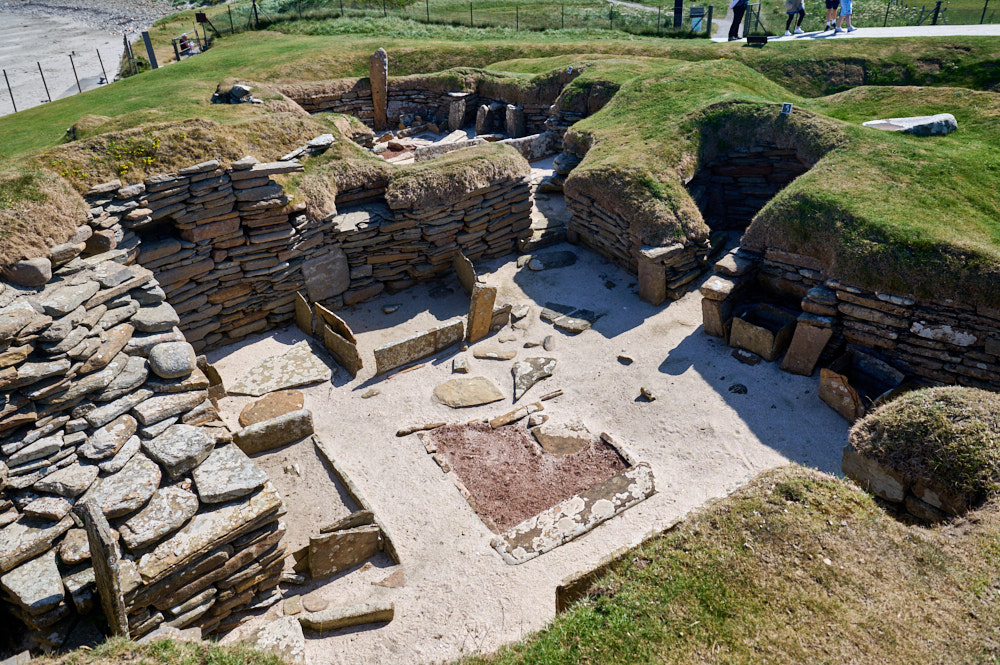
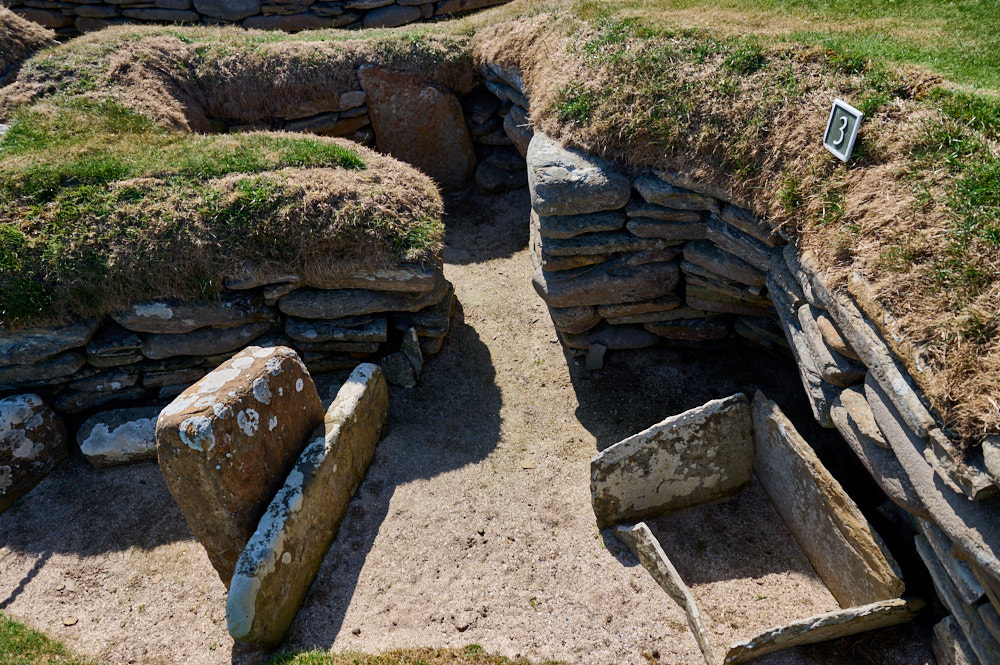
Like the Broch of Gurness, it is a fascinating step back in time.

